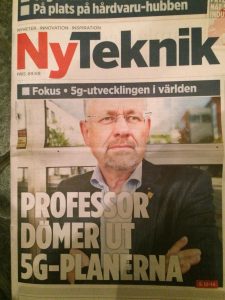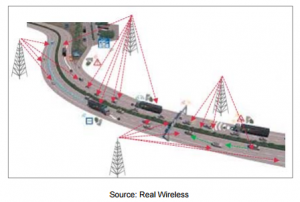I was happy to attend the IEEE ICC conference for the first time. The conference was held in Paris, from 21 to 25 May.
KEYNOTE SPEECHES:
Almost all keynote speeches in the conference were about 5G. I was looking to see new trends, big news, and etc. in the keynote sessions, but most of these talks were marketing (e.g. Serge Willenegger, The On the Path to 5G) or a survey on a research/technology field (e.g. Giuseppe Caire, Wireless Edge Caching: Promises and Recent Advances. For a complete list of talks, refer to here.
TECHNICAL SESSIONS:
More than 16 technical sessions were held in parallel for 3 days, covering a wide range of research arenas from 5G technologies, to applications, services, and etc. It was interesting to see that a quite large number of sessions were on security and privacy in 5G, IoT, big data and clouds. Also, I found several technical sessions on Cloud-RAN, and the way it will contribute in 5G. Green communications was also an important part of ICC. My paper on ”Fundamental Tradeoffs in Resource Provisioning for IoT Services over Cellular Networks” (paper, presentation) was presented in a section named ”green enabling technologies for IoT for 5G”.
Three interesting papers:
Among different papers, I found the 3 following papers exciting/outstanding for you to read.
- The Dark Side of Network Functions Virtualization: A Perspective on the Technological Sustainability
- Cost analysis of Smart Lighting Solutions for Smart Cities
- Massive Machine-Type Communication (mMTC) Access with Integrated Authentication
Especially, the second paper is close to our techno-economic analysis, and has exciting results. The results presented in this paper shows that deployment of a smart network managing lighting in city center of Luxembourg will bring benefits from the first year, i.e. the saving in energy will be more than the CAPEX and OPEX. It is also interesting to see that for saving energy in lighting (which the authors claimed that it consumes 40% of the municipality budget), the authors have proposed the same ideas as we have in green communications, like traffic-aware BS/light sleeping.
TUTORIALS:
A good set of tutorials were available on the first and last days of conference. Among them, the TS06. Recent Progress in Non-Orthogonal Multiple Access was interesting for me. Besides this tutorial, I saw a quite large number of research papers on non-orthogonal multiple access in the conference which is to me a paradigm shift.
INPUT FROM INDUSTRY:
Besides people from academy, there were several industry exhibitions and forums. Like every other event, National Instruments and their 5G prototypes were there. Also, ICC was a great place for LoRA (from France) to present itself. They had several accepted papers and exhibitions as well. It was interesting that the presenter of LoRA was employed in LoRA in Lund, Sweden, and he claimed that LoRA has been deployed in many countries up to know (loot at this image). It was strange that SigFox was absent in the ICC. From my point of view and to the best of my literature and web review, LoRA has succeeded in competition with SigFox. Nokia was also in the ICC, but Ericsson was absent (Ericsson is busy in these days with Verizon in USA for 5G tests).

 In a recent
In a recent  The 5G myth is the
The 5G myth is the  Amsterdam based russian mobile operator
Amsterdam based russian mobile operator 


 the assumptions you make. In the report, the performance and spectrum limiting application for 5G is that thousands of viewers are watching 4K/UHD-TV in their cars on every mile the motorway. As this is realized by a macro-cellular system and not by a dense infrastructure at the roadside, of course we end up with a system with moderate cost, but with outrageous spectrum requirements. Wait a minute – mobile TV as a “killer app” – doesn’t that sound familiar ? Do we really need a new 5G radio interface to make this happen ? And how will 50 Mb/s to cars in the motorway contribute to create millions of jobs in Europe ?
the assumptions you make. In the report, the performance and spectrum limiting application for 5G is that thousands of viewers are watching 4K/UHD-TV in their cars on every mile the motorway. As this is realized by a macro-cellular system and not by a dense infrastructure at the roadside, of course we end up with a system with moderate cost, but with outrageous spectrum requirements. Wait a minute – mobile TV as a “killer app” – doesn’t that sound familiar ? Do we really need a new 5G radio interface to make this happen ? And how will 50 Mb/s to cars in the motorway contribute to create millions of jobs in Europe ?